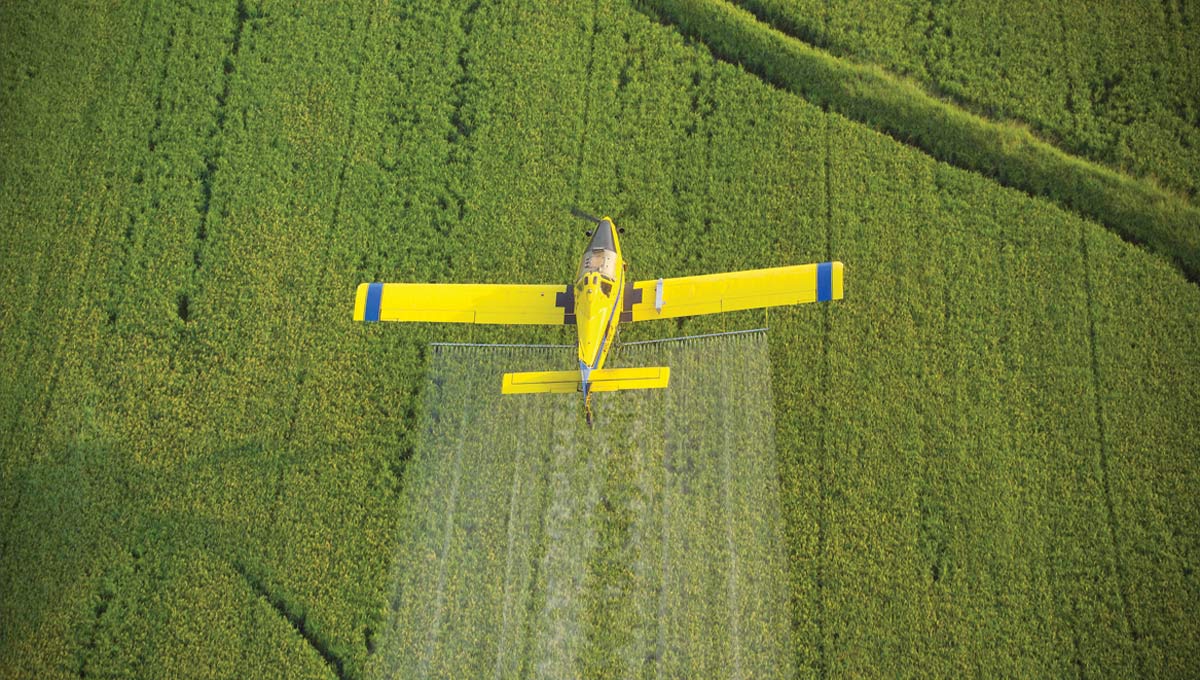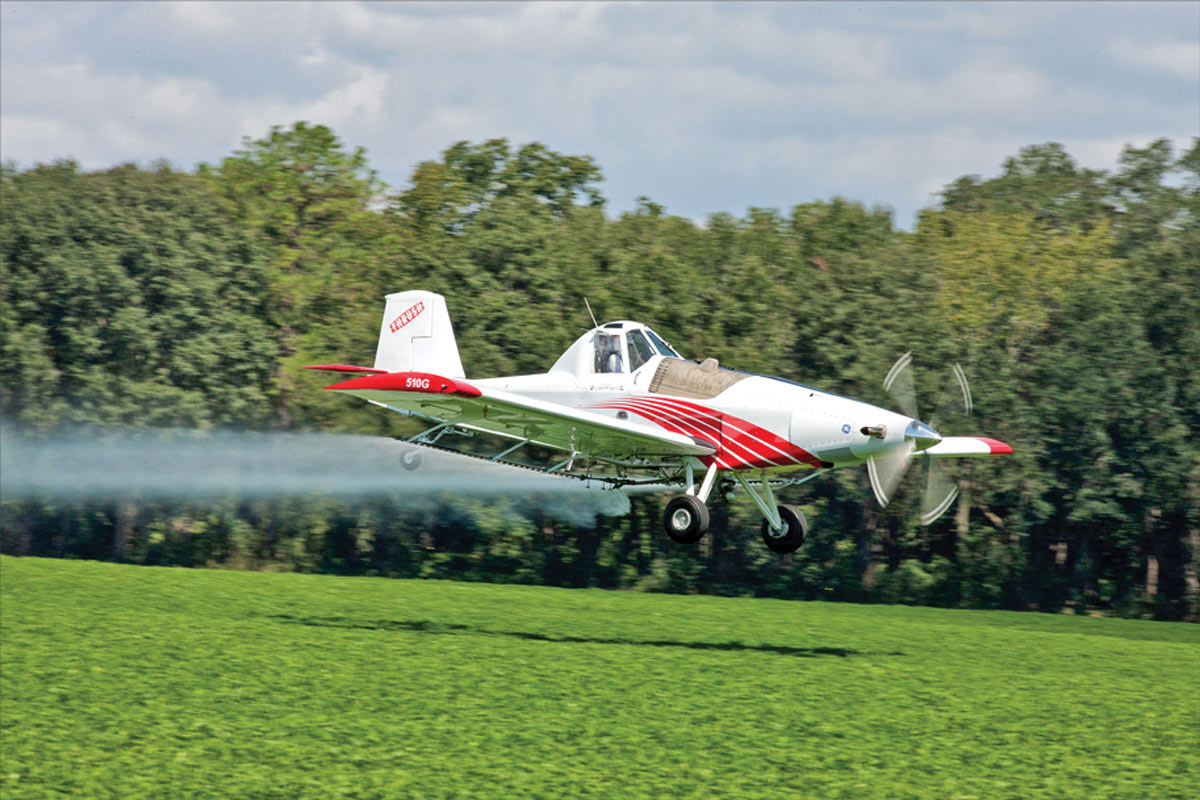Recasting How We Communicate About Pesticides

PESTICIDES! Yep! I said it! The “P” word. Don’t be aghast. It’s all right. We’re saying it again. We need to say it again because by trying to be politically correct for a quarter of a century and renaming them “crop protection products (CPPs),” the environmental activist community was able to uninterruptedly and publicly malign these chemical miracles to crops.
The name change from pesticides to CPPs coincided with the internet boom of the 1990s when the world was going online. Since only those in agriculture were using the term CPPs, whereas the public (and eco-activists) continued to use the word pesticides, internet browser searches for the word “pesticide” would primarily top-list websites that were unfavorable to pesticides, and not ag groups’ webpages that were championing the importance of “crop protection products” (not “pesticides”) to food, fiber, bioenergy and public health protection. As a result, pesticides’ societal contributions were being sparsely highlighted in cyberspace. There is a new industry movement to call pesticides “pesticides” again. The rebirth and importance of using the word “pesticides” and how to recast the public discussion of them is a campaign CropLife America (CLA)—the national association representing pesticide manufacturers—is working on. In 2019 and 2021, CLA held multiple focus groups in six U.S. cities to gauge urban and suburbanites on their knowledge and opinions of pesticides and what information resonated positively with them about pesticides. (See “Persuasive Pesticide Messaging,” Agricultural Aviation, Spring 2022.)
The following were some of the opinions shared by a focus groups:
Focus Group Participants’ Opinions of Pesticides
A majority held a negative view of pesticides. They didn’t know any of the current pesticide manufacturing companies’ names, other than one that no longer exists—Monsanto—which some referenced as Mon-Satan.
- Their perceptions of pesticides and farming were outdated and unknowing of the many sophisticated modern chemistries and ag technologies commonly used today.
- Participants’ understanding of the pesticide regulatory process was nonexistent.
- Participants believed that if pesticides were not available, better alternatives would surface.
Knowing these public opinions about pesticides, what do we do about it? How do we have a productive conversation with people that are unknowing or skeptical about pesticides? Now that we know what the public thinks about pesticides and important communication techniques to address an audience effectively, what messages work best to inform them and address their skepticism about pesticides? The CLA focus groups conducted in 2021 tested what information worked best with the public. They found that focusing on positive developments, like innovation and technological advances in the pesticide industry, worked well. What also worked well was messaging on how the risks of pesticides were mitigated and how pesticides benefit society. The following sections list informative details to use in these three categories. (An additional excellent source of information on the benefits of pesticides applied aerially may be found at AgAviation.org/aboutagaviation and AgAviation.org/naaamediarelationskit.)

Innovation and Technological Advancements of Pesticides:
- In response to changing farming methods, pesticide manufacturers are developing more targeted, more selective and safer solutions to control weeds, diseases and insects that threaten the food supply. The current generation of pesticides commonly targets unique individual traits within a specific insect, plant or disease.
- New pest solutions, like biopesticides, GPS and digital imaging, and other improved products and techniques help farmers practice strategies that use fewer pesticides, less frequently, and in smaller doses.
Benefits/Sustainability of Pesticides:
- Global demand for food today comes from the 7.7 billion people on the planet. World population will increase 25 percent to 9.7 billion by 2050. Between the 1930s and 2016, pesticides contributed to a 650 percent increase in corn yields from approximately 26 bushels per acre to 170 bushels. Given the current population growth, the demand for food will rise somewhere between 70 percent and 100 percent by 2050, according to the USDA.1
- Roughly 400 million acres of land are used to grow crops in the U.S. today. Twice that much would be needed without pesticides. To put this in perspective, 800 million acres is 42 percent of the total land area of the U.S.’s lower 48 states. In addition to clearing forests and wetlands and threatened and endangered species’ habitats, vast amounts of water and twice the amount of fuel would be needed to produce the same amount of food without pesticides.
- Pesticides allow for no-till farming where harvested crop fields are not plowed and crop residues such as corn stalks are left as mulch. This reduces soil erosion by 90 percent, conserves water, improves soil health and reduces fuel use (a reduction of 812.4 million gallons of fuel each year, or approximately the amount of energy required by 3.2 million homes, and a reduction in carbon dioxide emissions of 9.1 million tons, enough to offset the annual CO2 emissions of nearly 1.9 million passenger cars).2
- Surging food costs, inflating at rates not seen in 40 years, threaten the world’s poorest, according to the United Nations, and experts say the COVID-19 pandemic has led to the highest domestic numbers of those suffering from hunger and the highest rise in food prices in decades.3
- Without modern pesticides, reduced yields would mean less food and, as a result, higher prices. Fresh fruit and vegetable prices would be directly affected, increasing 35–45 percent. Crop yields could decrease 70–80 percent without pesticides.4
- Ninety-eight percent of all farms are family-owned, accounting for nearly 90 percent of U.S. farm production. Farmers have thin profit margins, 72 percent of which make less than 10 percent before taxes. Without pesticides, decreased crop yields would put many farmers out of business.5
- Cover cropping is also a beneficial, sustainable farming practice that pesticides help facilitate. A cover crop such as grasses, legumes, small grains and other low-maintenance crops are planted over the cash crop. The cover crops control erosion, retain and recycle soil nutrients, build organic matter to improve soil health, enhance water quality and moisture availability, and break disease and insect cycles. It also sequesters carbon. Once the cover crop has run its cycle, pesticides are used to convert it to mulch for next season’s cash crop planted over its soil enhancing/preserving residue.
Risk Mitigation of Pesticides:
- By law, pesticide manufacturers must make all data on each product available to the EPA for review. One in 10,000 active ingredients make the 11-year, $250 million journey from discovery to registration for use sanctioned by the EPA and then must be rereviewed for safety every 15 years.
- The EPA, FDA, USDA and state regulatory agencies regulate pesticides to ensure their dietary, occupational and environmental safety.
- Government agencies conduct millions of analyses on thousands of food samples each year. If residues are found, they are at levels lower than the limits set by the EPA.6 These lower limits are based on a scientific assessment that sets a threshold well below a point where there would be a “reasonable certainty of no harm”7 for even vulnerable populations such as infants and the elderly. In fact, a child could consume 860 pounds of blueberries a day without experiencing negative effects from pesticide residues within EPA limits.
These pesticide communication techniques may be used verbally and if engaging with someone on social media. There are important additional rules to follow on social media. Again, the following were recommended at the CLA “Pesticide Discussion” event to ensure positivity and credibility when communicating via social media.
Social Media Communication Recommendations:
- Facebook and Twitter are the preeminent sites to spread your word because they are the most popular social media platforms.
- If you come across a positive, reputable article on pesticides, be sure to like it, make a positive comment and share it.
- Beware of reacting to a negative story with comments, etc., as it could extend the story’s reach.
- When posting an article, ensure it is from a reputable source, cite sources and include a call to positive action if possible.
- Sharing positive posts means it goes to more people.
- You don’t have to respond to negative comments. Sometimes silence is deafening. If a negative/unproductive/aggressive remark is ignored, it can speak volumes, especially when surrounded by positive remarks and “likes.”
- “Like” positive comments and shares. It encourages positive feedback and attention to your messaging when you post.
- Follow other like-minded, positive social media sites and people so you can be followed back to spread your word.
- Use hashtags (for example, #pesticides) to further spread your message. The use of a hashtag results in the hashtagged word becoming a live link on the social media site, so when a user clicks on the hashtag link, the site returns a list consisting of every post which contains the same hashtag, starting with the most recent. This is another way to get your message out.

Recreating a positive perception about pesticides won’t be easy. There is no silver-bullet solution, and no one is going to do it for us. But even if it must happen one conversation at a time, it is the proper thing to do.
Andrew Moore is the CEO of the National Agricultural Aviation Association (NAAA) in Alexandria, Virginia. NAAA represents the interests of the 1,560 aerial application industry owner/operators and 2,028 non-operator agricultural pilots throughout the United States.
- Popp, J., Peto, K & Nagy, J., (2013). Pesticide productivity and food security. A review. Agronomy for Sustainable Development, 33, 243-255.
- Natural Resources Conservation Service, Reduction in Annual Fuel Use from Conservation Tillage, 2016.
- Trompiz, G., Reuters News, 10 June 2021, available at www.reuters.com.
- Oerke, E. (2005). Crop losses to pests. The Journal of Agricultural Science, 144(1), 31-43. Doi: 10.1017/S0021859605005708.
- USDA, America’s Diverse Family Farms: 2018 Edition, available at www.ers.usda.gov/webdocs/publications/102808/eib-231.pdf?v=5375.5
- USDA, Pesticide Data Program Annual Summary, Calendar Year 2017, December 2018. www.ams.usda.gov/sites/default/files/media/2017PDPAnnualSummary.pdf
- See, The Federal Food, Drug, and Cosmetic Act, 21 USC 1, 346a(b)(2).